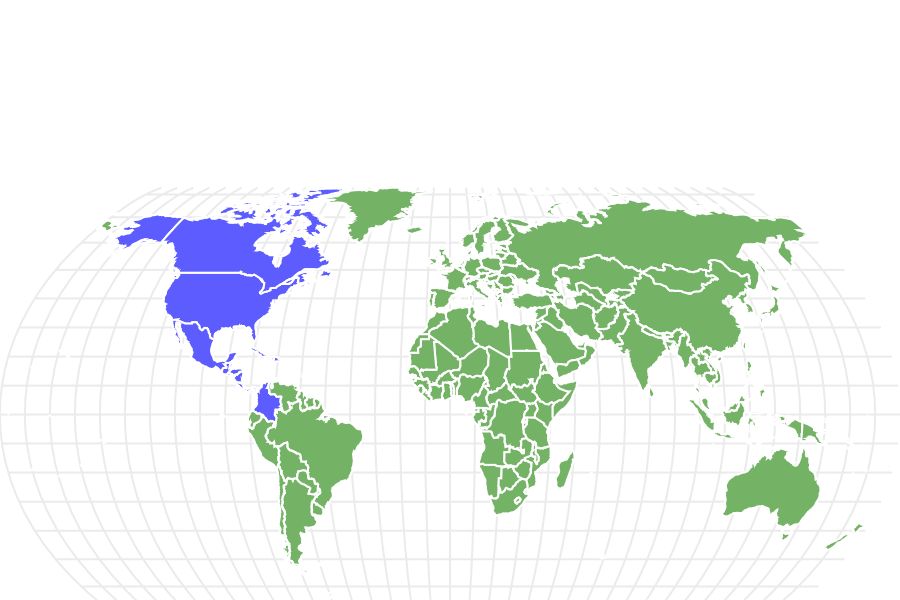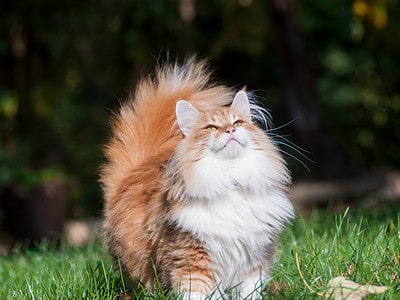Yellow Bellied Sapsucker
Sphyrapicus varius
The males are responsible for choosing the nesting tree most of the time. Luckily, cavity nests are often reused for multiple breeding seasons (up to 7 years.)
Advertisement
Yellow Bellied Sapsucker Scientific Classification
- Kingdom
- Animalia
- Phylum
- Chordata
- Class
- Aves
- Order
- Piciformes
- Family
- Picidae
- Genus
- Sphyrapicus
- Scientific Name
- Sphyrapicus varius
Read our Complete Guide to Classification of Animals.
Yellow Bellied Sapsucker Conservation Status
Yellow Bellied Sapsucker Facts
- Prey
- Insects
- Main Prey
- Ants
- Group Behavior
- Family units
- Flock
- Fun Fact
- The males are responsible for choosing the nesting tree most of the time. Luckily, cavity nests are often reused for multiple breeding seasons (up to 7 years.)
- Estimated Population Size
- 14 million
- Biggest Threat
- These birds are common in their range, and they have no significant threats at the moment
- Most Distinctive Feature
- Red Crown
- Wingspan
- 3.5 to 16 inches
- Incubation Period
- 10 to 14 days.
- Age Of Fledgling
- 25 to 30 days
- Habitat
- Edge habitats and young forests
- Predators
- Raccoons and snakes
- Diet
- Omnivore
- Lifestyle
- Diurnal
- Favorite Food
- Sap
- Common Name
- Yellow-bellied sapsucker
- Location
- Canada, Northeastern United States, Eastern Alaska, Eastern United States , West Indies, Central America
- Average Clutch Size
- -1
- Migratory
- 1
View all of the Yellow Bellied Sapsucker images!
The yellow-bellied sapsucker is a woodpecker species native to eastern Alaska, Canada, and the northeastern United States.
They take their job seriously and will drill a network of little holes into the bark of trees, which are referred to as “sap wells.” Then, they drink the sugary sap that wells up from the tree’s vasculature.
Yellow-bellied sapsuckers are beneficial to their ecosystem because many other species of birds, insects, and mammals also feed on the sweet tree sap.
Three Incredible Yellow-Bellied Sapsucker Facts!
- They are cavity nesters, and males do the bulk of the work, taking two to three weeks to excavate the cavity.
- Sapsuckers are not monogamous but form mating pairs who stay together for the nesting season and raising of offspring. These pairs will often (but not always) reunite for future seasons. However, this “monogamous” behavior has more to do with the nesting area or specific tree than the mate.
- Yellow-belly sapsuckers are omnivores, and like their namesake, sapsuckers eat, live and breathe sap. While sap is not the only thing yellow bellies eat, it accounts for a significant proportion of their diet, and the majority of their foraging time is spent creating, maintaining, inspecting, and feeding from sap wells.
Where to Find the Yellow-Bellied Sapsucker
The yellow-bellied sapsucker is native to:
- Canada
- Northeastern United States
- Eastern Alaska
- Eastern United States
- West Indies
- Central America
In addition, they are rare vagrants in Ireland and the United Kingdom. During the warmer months, the yellow-bellied sapsucker prefers living in edge habitats and young forests, especially in areas recovering from timber harvesting.
In these young forests, there are ample amounts of fast-growing trees with ripe sap wells to feed their craving. So, sapsuckers don’t rely on dead trees for nourishment like many other woodpecker species. However, they do search for trees containing decay or dead branches to build cavity nests.
During the colder months, yellow-bellied sapsuckers aren’t as picky about their habitat and occur in bottomland hardwood forests as tall as 10,000 feet, but never in conifer stands. In addition, they seek shelter from the cold in forests of hickory, Pine, or oaks.
Yellow-belly Sapsucker Nests
Drilling wells is challenging work, so yellow-bellied sapsuckers tend to seek out the same tree species for nesting; these trees include:
- Aspen
- Birch
- Maple
- Beech
- Elm
They make nests in living trees; however, yellow-bellied sapsuckers usually choose trees infected with a fungus that causes the tree’s sapwood or heartwood to decay, which makes drilling easier.
The males are responsible for choosing the nesting tree most of the time. Luckily, cavity nests are often reused for multiple breeding seasons (up to 7 years.)
Males do the hard labor by excavating the cavity, which takes between 14 to 21 days. They do not line the nests; instead, females lay their eggs on woodchips, which fall during excavation.
While the entrance hole is tiny (usually around 1.5 inches), but the actual cavity is much bigger, generally about 10 inches deep.
Nesting Facts
| Clutch Size | 4 to 6 eggs |
| Number of Broods | 1 |
| Incubation Period | 10 to 13 days |
| Nestling Period | 25 to 30 days |
| Egg Description | White |
| Condition at Hatching | Featherless and blind with pink skin and gray bill; their eyes open after 8 days |
Yellow-Bellied Sapsucker Scientific Name
The Yellow-bellied sapsucker’s scientific name is Sphyrapicus varius and belongs to the Order Piciformes. This order includes many common bird species like the:
- European great spotted woodpecker (Dendrocopos major)
- Green woodpecker (Picus viridis)
- American flicker (Colaptes auratus)
- Downy woodpecker (D. pubescens)
Piciforms are essential to their ecosystems because the order contains many insect-eating species.
Yellow-bellied sapsuckers are members of the Family Picidae. This Family includes birds like:
- Woodpeckers
- Sapsuckers
- Flickers
- Wrynecks
- Piculets
Woodpeckers are an essential member of this Family and occur throughout the world, with the caption of New Zealand, Australia, Madagascar, and Antarctica.
Bird species belonging to this Family have substantial, straight bills, short legs, a reinforced skull, strong feet (needed for climbing), and stiff tail feathers. In addition, their tongues are incredibly long, which is an adaptation they need to feed.
Yellow-bellied Sapsucker Size and Appearance
The yellow-belly sapsucker has an upright posture, a thick straight bill, and a forked tail. Because of these characteristics, most bird enthusiasts immediately identify it as a woodpecker. However, they have specific features that help birders identify what type of woodpecker they are, and that includes:
- Males sport a black and white striped face with a red crown and forehead
- Red throat with a think black border
- Their upper parts are barred white and black with darker minimally marked wings that show one bold white stripe starting a the shoulder and leading down the wing.
- The white stripe is easily identifiable on the upper wings during flight
- They have a white rump with a black tail and white barring on the central feathers
- Their underparts are lighter with mottled black and white; however, they may appear gray with a yellow-buff wash
- Flanks have the heaviest yellow markings, but the extent of the yellow varies
Females are almost identical to males, with a few exceptions. Firstly, they may show a buff wash on the back. Their throats are white, and their crowns are often paler than males. Both sexes have dark eyes and legs, with grayish-black feet.
Their offspring look similar to the adults but aren’t as boldly marked and lack any red. In addition, their facial markings are not as distinct. Instead, they have a buff-brown wash that is visible on their heads and backs, and the black throat border may be incomplete or totally absent. In addition, juveniles also appear to have a scaly appearance on their breasts and flanks.
Size
The yellow-bellied sapsucker can measure 7. to 8.4 inches in length, and its average weight is about 1.77 ounces. However, their weight ranges from 1.2 to 2.2 ounces. In addition, they have a wingspan ranging from 3.5 to 16 inches.
Yellow-Bellied Sapsucker Migration Pattern and Timing
Yellow-bellied sapsuckers begin their southward migration in September, with females making the journey first, followed by the males shortly after. They primarily migrate east of the Rocky Mountains at night, usually in flocks.
During the colder months, males will typically stay in the USA, preferably in Long Island south and Kansas. However, females migrate to areas like Central America, West Indies, and Mexico. So, yellow-bellied sapsuckers at the northern edge are generally male, and the southern extreme hosts the females.
So, during spring migration, males usually arrive at the breeding grounds in the south by late March and fly north in early May.
Diet and Behavior
Yellow-belly sapsuckers are omnivores, and like their namesake, sapsuckers eat, live and breathe sap. While sap is not the only thing yellow bellies eat, it accounts for a significant proportion of their diet, and the majority of their foraging time is spent creating, maintaining, inspecting, and feeding from sap wells.
If they live in a diverse environment, sap only makes up around 20% of their diets; however, at certain times, it makes up 100%. In addition, yellow-belly sapsuckers consume more sap when its sugar content is higher, and the bird needs more energy, for example, when they molt.
The rest of the yellow belly’s diet consists of insects, specifically ants. Most are caught in flight near sap wells, while others are exposed by flaking off the bark. However, some insects are caught in the sap wells themselves.
Sometimes, yellow bellies dip the insects into the sap before eating them. In addition, they enjoy consuming:
- Fruit
- Seeds
- Leaf buds
- Bast
Yellow Bellied Sapsucker Reproduction, Babies, and Lifespan
The yellow-belly sapsucker’s breeding range covers most of the boreal zone from southern Newfoundland to east-central Alaska.
In addition, it touches on northeastern Iowa and western Maryland. There are also isolated populations in the Great Smokey Mountains and Allegheny Mountains.
However, around 55% of the population inhabits Canada’s boreal forests. The males start to arrive several days before the females to establish territories. They do this by the drumming cadence, which is unique to the species. The drumming cadence consists of a short roll followed by a quick pause and multiple individual abbreviated rolls or strikes.
While they are not monogamous, both sexes usually return to the same nest territory as the previous year, so repairings are not unusual. In fact, they often use the same tree or even the same cavity.
Males are in charge of excavating new cavities, which generally takes them a week to 20 days. However, females will contribute if necessary; they step in if it’s taking too long or after several failed nest attempts.
Yellow bellies prefer carving out cavities in diseased deciduous trees like the quaking aspen that is usually infected with heartwood decay fungus.
Females lay 4 to 6 eggs, which both sexes incubate for 10 to 14 days. Offspring will start to fledge when they are 25 to 30 days old, taking over two to three days.
When the fledglings are ready, the parents will coax them out of the nest with a meal; once out, they will not renter the cavity.
Yellow-belly sapsuckers only brood once a year, and family groups will stick together near sap wells. The offspring will first learn to feed on sap and later feed on insects.
Lifespan
Yellow-bellied sapsuckers have an average lifespan of 6 to 7 years in the wild.
Predators, Threats, and Conservation Status
Adult and nestling Yellow-bellied sapsuckers usually fall prey to raccoons, especially if their nests aren’t high enough. In addition, they need to be wary of snakes as well.
These birds are common in their range, and they have no significant threats at the moment. However, their populations are decreasing yearly, probably due to habitat loss, affecting their nesting and feeding sites.
The yellow-bellied sapsucker is listed as Least Concern on the IUCN redlist, despite its decreasing population.
The Migratory Bird Treaty Act lists the yellow-bellied sapsucker and protects them in the USA, making it illegal to catch, kill or possess one without a permit.
Population
It’s tough to determine the exact population size of the yellow-bellied sapsucker. However, there are an estimated 14 million breeding individuals. However, this number is quickly dwindling thanks to habitat and food loss.
Communication
These amazing birds use multiple calls to communicate with each other. For example, males let out a long-distance nasal ‘neaah,’ ‘wee-wee-wee-wee,’ ‘owee-owee,’ or ‘kwee-urk’ when mating begins, which attracts females to various places within their territory.
When birds of the same group meet, they greet each other with a low ‘week week,’ ‘wurp,’ wurp,’ or something similar. However, when pairs meet in a breeding area, they let out a scratchy ‘quirk quirk.’
If yellow-bellied sapsuckers feel threatened or scared, they let out a soft mew, which gets louder and hoarser as the threat gets closer. In addition, they produce a shrill ‘quarr’ during the conflict.
Similar Species
There are three bird species that share similar characteristics with the yellow-bellied sapsucker; they include:
The Red-naped Sapsucker
The red-naped sapsucker shares the yellow-bellied sapsucker’s love for sugar and also drills near rows of holes in trees and willow to lick up the sugary sap that flows out of:
- Aspens
- Birch trees
- Willows
Another way to tell red-naped sapsuckers apart from other bird species is their harsh and wailing cries, which include stuttered drumming. In addition, they have a red patch on the back of their head, which is one of the most significant differences between them and the yellow-bellied sapsucker.
The Hairy Woodpecker
These woodpeckers are medium in size and found over a massive area of North America. Hairy woodpeckers are approximately 9 inches in length with a wingspan of 15 inches. Their population size has an estimated 9 million individuals, and they are listed as a Least Concern on IUCN’s Redlist.
The Downy Woodpecker
The downy woodpecker is the smallest of its species in North America. They are common and widespread birds but tend to avoid the arid southwest.
They are the most familiar Family member in the east and are often seen entering towns, city parks, and frequent backyard bird feeders. Its tiny size helps it access a variety of food on weed stalks and in large trees. During winter, the downy woodpecker often joins mixed flocks that usually include species like:
- Nuthatches
- Chickadees
- Other birds in the woods
Yellow Bellied Sapsucker FAQs (Frequently Asked Questions)
Are Yellow-bellied Sapsucker rare?
These birds are common in their range, and they have no significant threats at the moment. However, their populations are decreasing yearly, probably due to habitat loss, affecting their nesting and feeding sites.
Is a Yellow-bellied Sapsucker the same as a woodpecker?
The yellow-bellied sapsucker is a woodpecker species native to eastern Alaska, Canada, and the northeastern United States.
Do yellow-bellied sapsuckers harm trees?
Yes, the yellow-bellied sapsucker does harm trees when they create cavities in the wood.
What is the difference between a sapsucker and a downy woodpecker?
Yellow-bellied sapsuckers are larger than downy woodpeckers. Downy woodpeckers have a shite stripe down their backs, whereas the yellow bellies have a red crown and throat and a white patch on their wings.
Thank you for reading! Have some feedback for us? Contact the AZ Animals editorial team.
Sources
- Wikipedia, Available here: https://en.wikipedia.org/wiki/Yellow-bellied_sapsucker#
- All About Birds, Available here: https://www.allaboutbirds.org/guide/Yellow-bellied_Sapsucker/lifehistory
- IUCN Redlist, Available here: https://www.iucnredlist.org/species/22680868/92883427#
- eBird, Available here: https://ebird.org/species/yebsap
- Audubon, Available here: https://www.audubon.org/field-guide/bird/yellow-bellied-sapsucker
- Boreal Birds, Available here: https://www.borealbirds.org/bird/yellow-bellied-sapsucker


















